A Novel Image-Classification-Based Decoding Strategy for Downlink Sparse Code Multiple Access Systems
Abstract
:1. Introduction
1.1. Background
1.2. Related Work and Motivation
1.3. Contributions
- We raise the idea of sub-coordinate systems, which make it possible to map information from received signals and transmission channels into a K-Polygon diagram. The differences in types of K-Polygon diagrams can be ultimately attributed to the differences in the corresponding transmission symbol combinations, enabling the replacement of the MPA in SCMA decoding with image classification technology.
- We propose the concept of a dynamic dataset with automatic labeling, which can generate the enormous K-Polygon diagrams needed for training. This method avoids the necessity for offline dataset hand labeling, which, to some extent, reduces the training time of the model, facilitating its faster deployment in new channel environments.
- Compared to other SCMA decoders, our decoder has better BER performance and lower computational complexity, offering a novel perspective for achieving signal detection tasks by directly classifying the generated K-Polygon diagrams.
1.4. Organization
2. SCMA System
3. Our Proposed Method
3.1. Sub-Coordinate System
3.2. Dynamic Dataset with Automatic Labeling
- S1: We choose some lower values, i.e., dB.
- S2: We choose some higher values, i.e., dB.
- S3: We train the model with a wide range of values, i.e., dB.
- S4: By removing the lower and higher values, we train the model using dB.
3.3. Model Optimization
3.4. Model Configuration
4. Simulation and Evaluation
4.1. Choice of Values
- S1: The chosen values for training are very low, resulting in excessive noise interference in signal transmission, and thereby reducing the effectiveness of training.
- S2: The network model is overfitted as a result of the values being chosen as excessively high, which decreases the BER performance of the KDCD at low values.
- S3: It is not able to prevent the detrimental effects of very low and excessively high values on training, which leads to a suboptimal BER performance, even though a wide range of values are chosen for training.
- S4: The best BER performance is achieved by choosing the appropriate range of values that prevents overfitting in the network model and enhances training efficacy.
4.2. BER Comparison
- Compared with the conventional decoding algorithm (TB-RMPA): Our KDCD can directly utilize the effective information of the received signals and channel characteristics to accomplish the decoding operations. However, the TB-RMPA relies on a large number of iterations. During every iteration, both valid and invalid information participate in the information exchange between resource nodes and user nodes, which reduces the effectiveness of message updates. In addition, our KDKD provides extra exploitable features (the features of connecting lines in the K-Polygon diagram), which facilitate the image classification.
- In contrast to previous DL-based decoders (DLDs): Our KDCD allows the neural network to leverage more features. Moreover, our KDCD can directly accomplish the signal detection tasks with image classification, fully utilizing the potential of neural networks’ capability for feature extraction.
4.3. Complexity Analysis
5. Conclusions
Author Contributions
Funding
Institutional Review Board Statement
Data Availability Statement
Conflicts of Interest
References
- Dai, L.; Wang, B.; Yuan, Y.; Han, S.; Chih-Lin, I.; Wang, Z. Non-orthogonal multiple access for 5G: Solutions, challenges, opportunities, and future research trends. IEEE Commun. Mag. 2015, 53, 74–81. [Google Scholar] [CrossRef]
- Nikopour, H.; Baligh, H. Sparse code multiple access. In Proceedings of the 2013 IEEE 24th Annual International Symposium on Personal, Indoor, and Mobile Radio Communications (PIMRC), London, UK, 8–11 September 2013; pp. 332–336. [Google Scholar]
- Taherzadeh, M.; Nikopour, H.; Bayesteh, A.; Baligh, H. Scma codebook design. In Proceedings of the 2014 IEEE 80th Vehicular Technology Conference, Vancouver, BC, Canada, 14–17 September 2014; pp. 1–5. [Google Scholar]
- Yu, L.; Fan, P.; Cai, D.; Ma, Z. Design and analysis of SCMA codebook based on star-QAM signaling constellations. IEEE Trans. Veh. Technol. 2018, 67, 10543–10553. [Google Scholar] [CrossRef]
- Ranjan, E.; Vikram, A.; Rajesh, A.; Bora, P.K. Auto-scma: Learning codebook for sparse code multiple access using machine learning. In Proceedings of the 2021 National Conference on Communications (NCC), Kanpur, India, 27–30 July 2021; pp. 1–5. [Google Scholar]
- Hou, Z.; Xiang, Z.; Ren, P.; Cao, B. SCMA Codebook Design Based on Decomposition of the Superposed Constellation for AWGN Channel. Electronics 2021, 10, 2112. [Google Scholar] [CrossRef]
- Du, Y.; Dong, B.; Chen, Z.; Fang, J.; Gao, P.; Liu, Z. Low-complexity detector in sparse code multiple access systems. IEEE Commun. Lett. 2016, 20, 1812–1815. [Google Scholar] [CrossRef]
- Ameur, W.B.; Mary, P.; Dumay, M.; Hélard, J.F.; Schwoerer, J. Performance study of MPA, Log-MPA and MAX-Log-MPA for an uplink SCMA scenario. In Proceedings of the 2019 26th International Conference on Telecommunications, Hanoi, Vietnam, 8–10 April 2019; pp. 411–416. [Google Scholar]
- Du, Y.; Dong, B.; Chen, Z.; Fang, J.; Yang, L. Shuffled Multiuser Detection Schemes for Uplink Sparse Code Multiple Access Systems. IEEE Commun. Lett. 2016, 20, 1231–1234. [Google Scholar] [CrossRef]
- Li, S.; Feng, Y.; Sun, Y.; Xia, Z. A low-complexity detector for uplink SCMA by exploiting dynamical superior user removal algorithm. Electronics 2022, 11, 1020. [Google Scholar] [CrossRef]
- Gui, G.; Huang, H.; Song, Y.; Sari, H. Deep Learning for an Effective Nonorthogonal Multiple Access Scheme. IEEE Trans. Veh. Technol. 2018, 67, 8440–8450. [Google Scholar] [CrossRef]
- Kim, M.; Kim, N.-I.; Lee, W.; Cho, D.-H. Deep Learning-Aided SCMA. IEEE Commun. Lett. 2018, 22, 720–723. [Google Scholar] [CrossRef]
- Lu, C.; Xu, W.; Shen, H.; Zhang, H.; You, X. An Enhanced SCMA Detector Enabled by Deep Neural Network. In Proceedings of the 2018 IEEE/CIC International Conference on Communications in China (ICCC), Beijing, China, 16–18 August 2018; pp. 835–839. [Google Scholar]
- Lin, J.; Feng, S.; Yang, Z.; Zhang, Y.; Zhang, Y. A novel deep neural network based approach for sparse code multiple access. Neurocomputing 2020, 382, 52–63. [Google Scholar] [CrossRef]
- Wei, C.-P.; Yang, H.; Li, C.-P.; Chen, Y.-M. SCMA Decoding via Deep Learning. IEEE Wirel. Commun. Lett. 2021, 10, 878–881. [Google Scholar] [CrossRef]
- Zheng, Y.; Hou, X.; Wang, H.; Jiang, M.; Zhang, S. A Knowledge-Based Deep Learning Detection Scheme for Downlink SCMA Systems. IEEE Wirel. Commun. Lett. 2023, 12, 486–490. [Google Scholar] [CrossRef]
- Howard, A.G.; Zhu, M.; Chen, B.; Kalenichenko, D.; Wang, W.J.; Weyand, T.; Andreetto, M.; Adam, H. MobileNets: Efficient convolutional neural networks for mobile vision applications. arXiv 2017, arXiv:1704.04861. [Google Scholar]
- Paszke, A.; Gross, S.; Massa, F.; Lerer, A.; Bradbury, J.; Chanan, G.; Killeen, T.; Lin, Z.; Gimelshein, N.; Antiga, L.; et al. PyTorch: An imperative style high-performance deep learning library. In Proceedings of the 2019 International Conference on Neural Information Processing Systems, Vancouver, BC, Canada, 8–14 December 2019; pp. 8026–8037. [Google Scholar]
- Karthiga, R.; Usha, G.; Raju, N.; Narasimhan, K. Transfer Learning Based Breast cancer Classification using One-Hot Encoding Technique. In Proceedings of the 2021 International Conference on Artificial Intelligence and Smart Systems (ICAIS), Coimbatore, India, 25–27 March 2021; pp. 115–120. [Google Scholar]
- Altera Innovate Asia FPGA Design Contest. Available online: http://www.innovateasia.com/5g/en/gp2.html (accessed on 15 September 2023).
- Kingma, D.P.; Ba, J.L. Adam: A Method for Stochastic Optimization. In Proceedings of the 2015 International Conference on Learning Representations (ICLR), San Diego, CA, USA, 7–9 May 2015. [Google Scholar]
- Russakovsky, O.; Deng, J.; Su, H.; Krause, J.; Satheesh, S.; Ma, S.; Huang, Z.; Karpathy, A.; Khosla, A.; Bernstein, M.; et al. ImageNet Large Scale Visual Recognition Challenge. Int. J. Comput. Vis. 2015, 115, 211–252. [Google Scholar] [CrossRef]
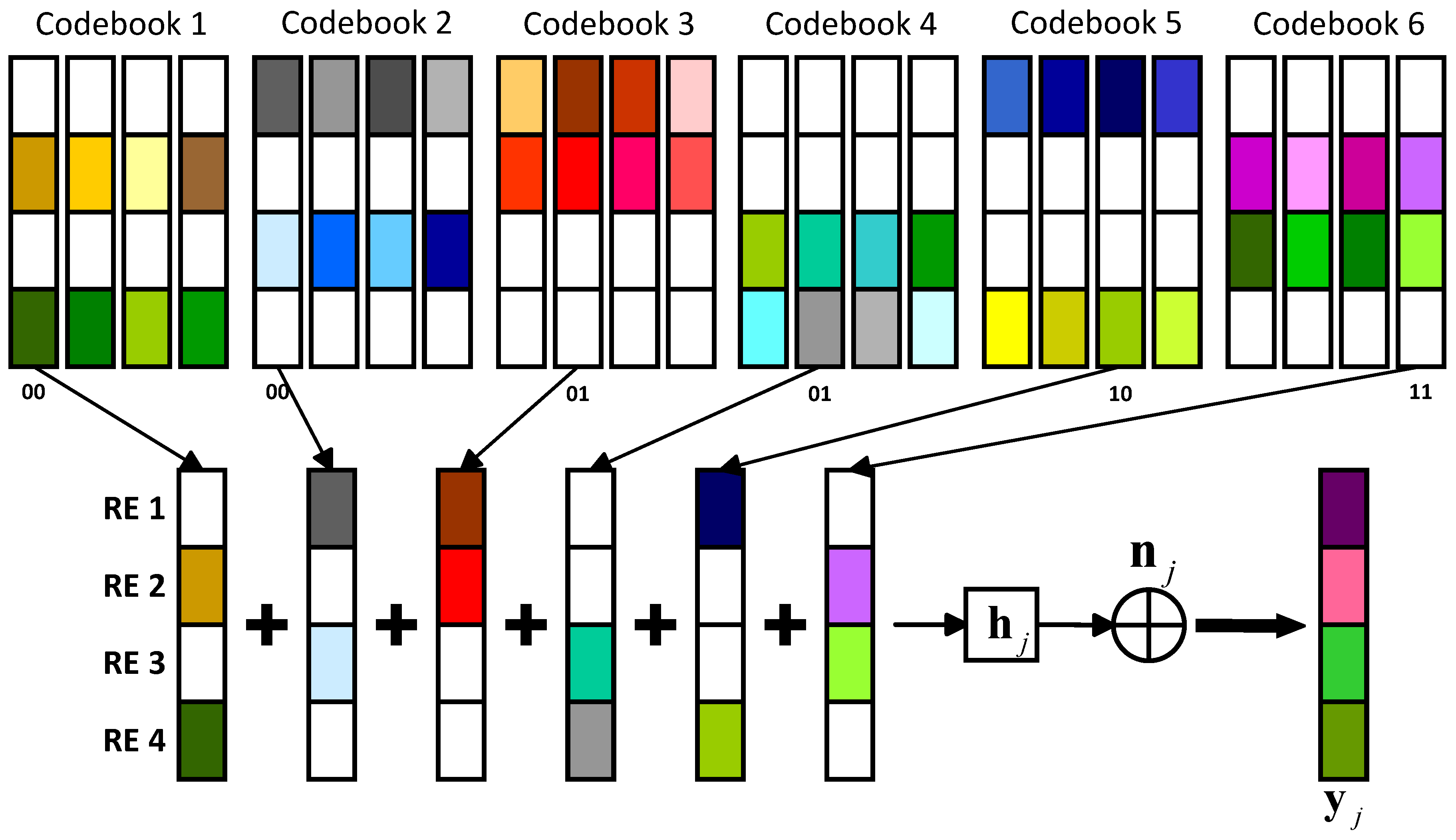
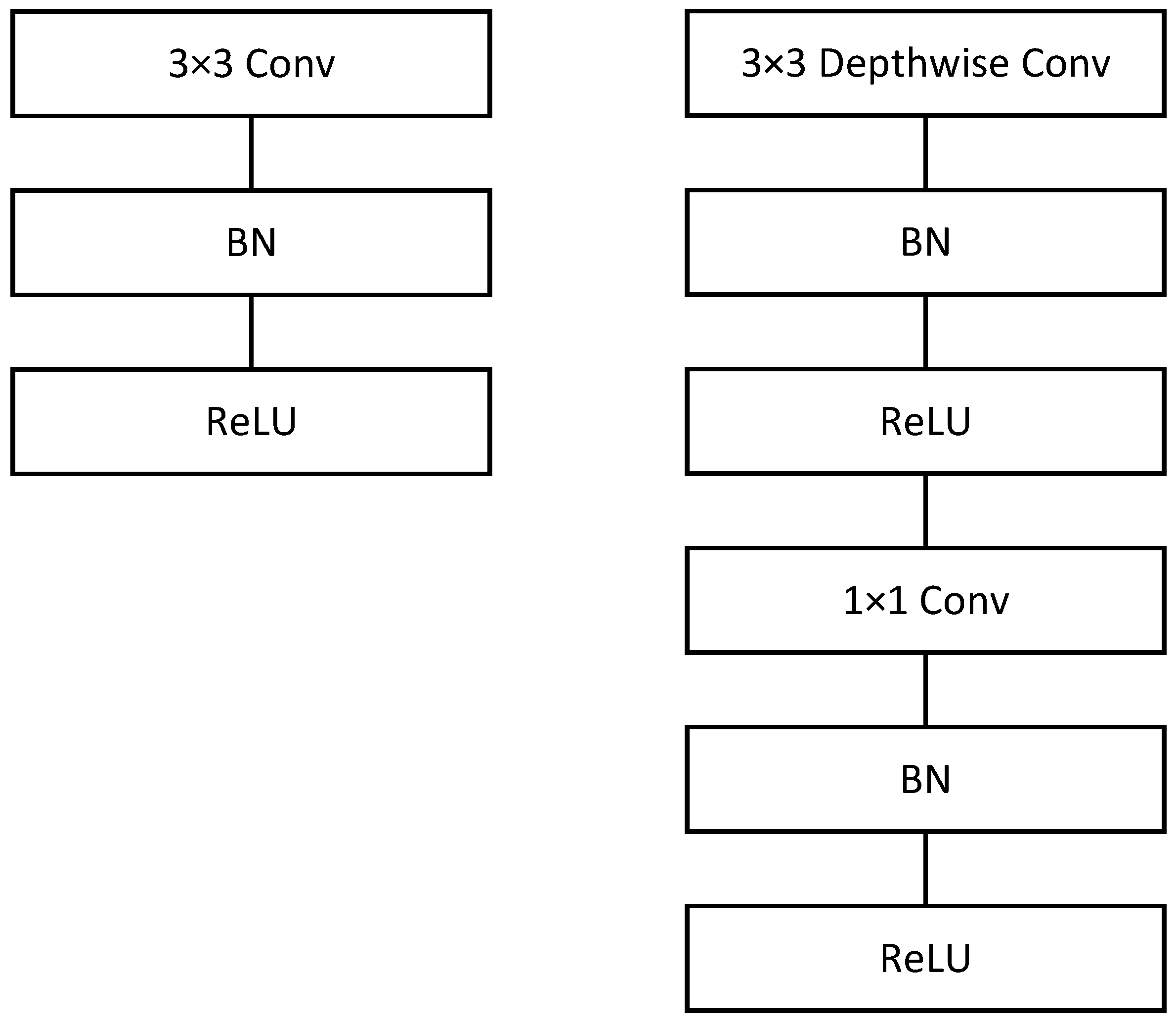
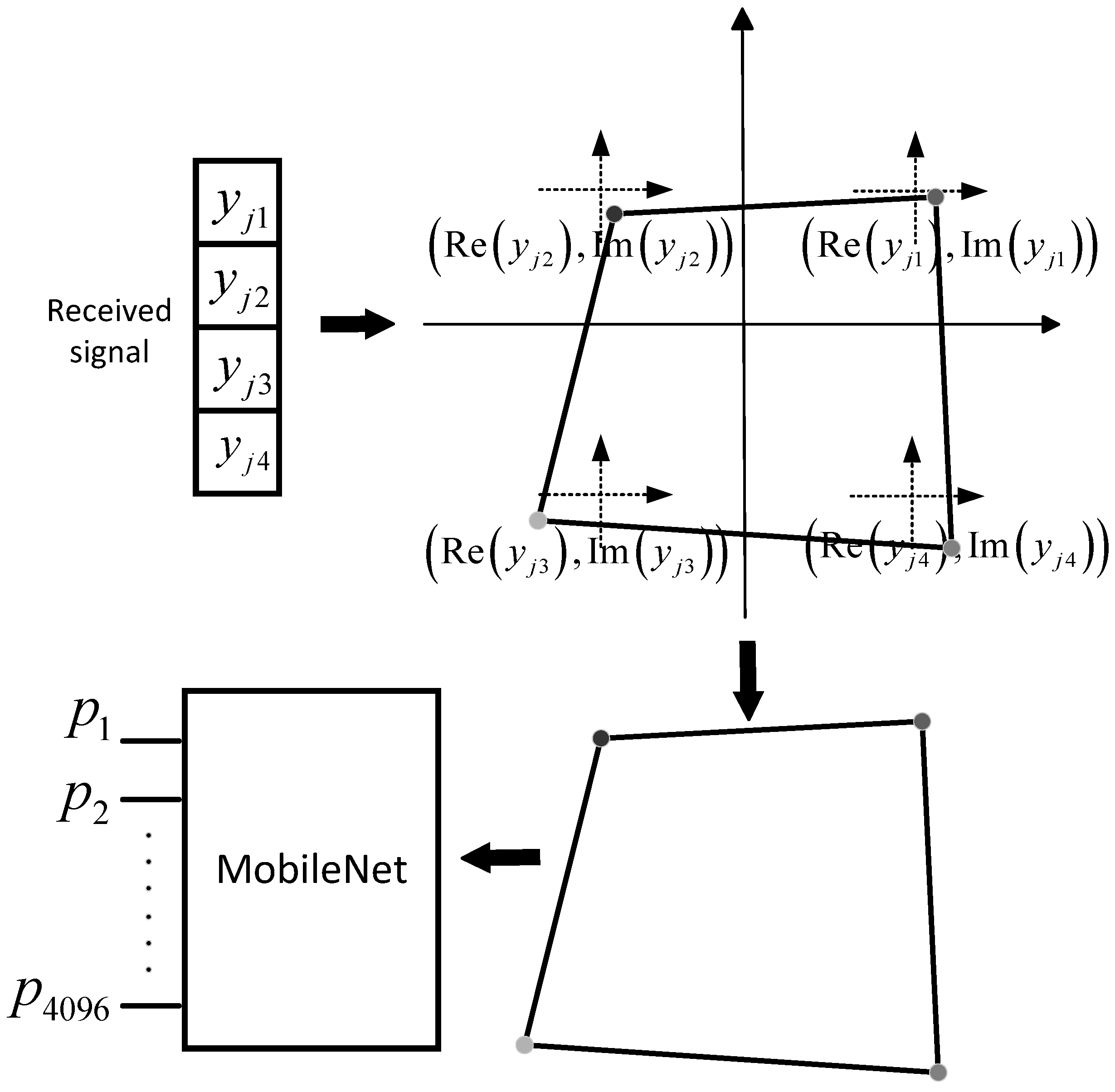
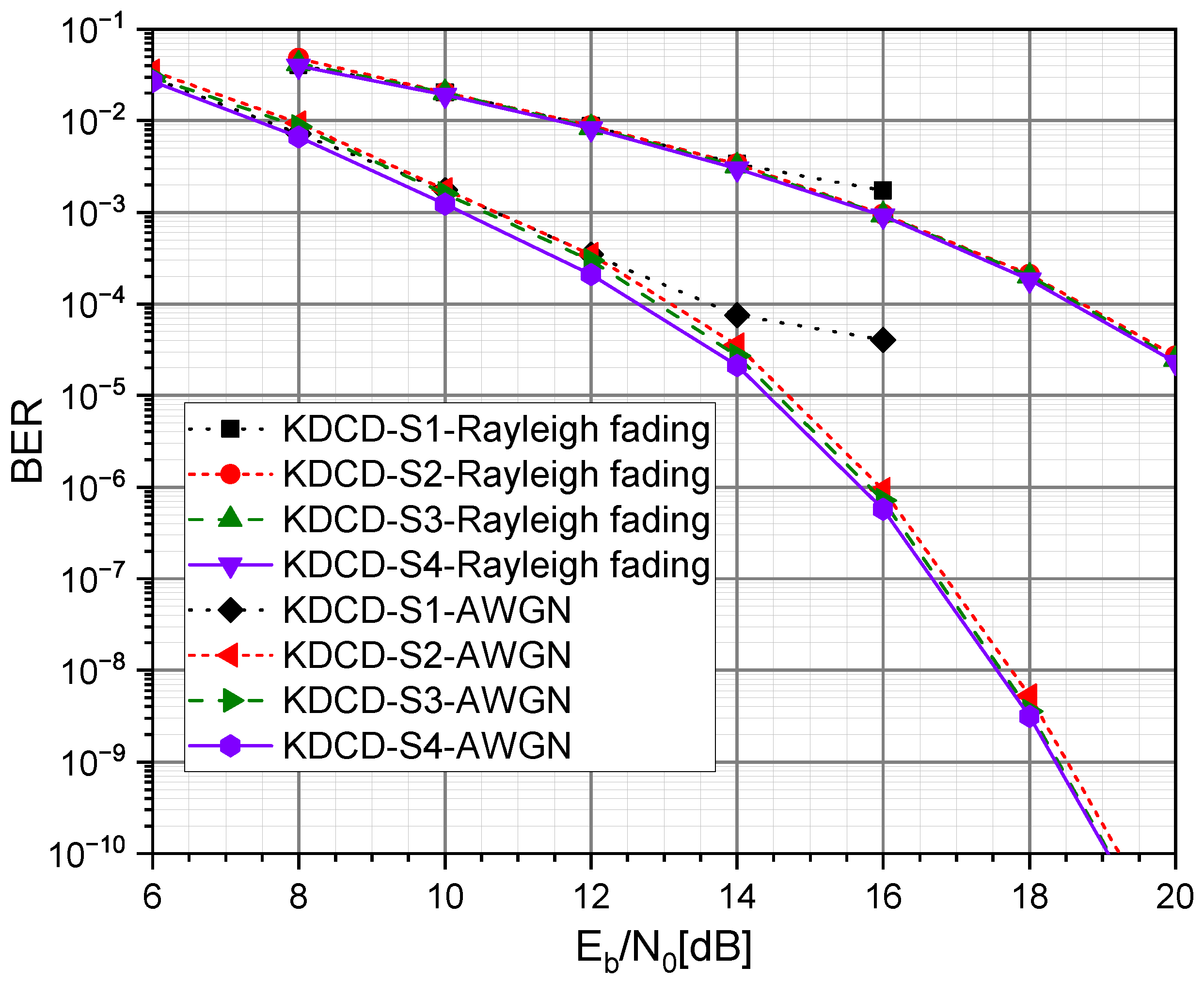
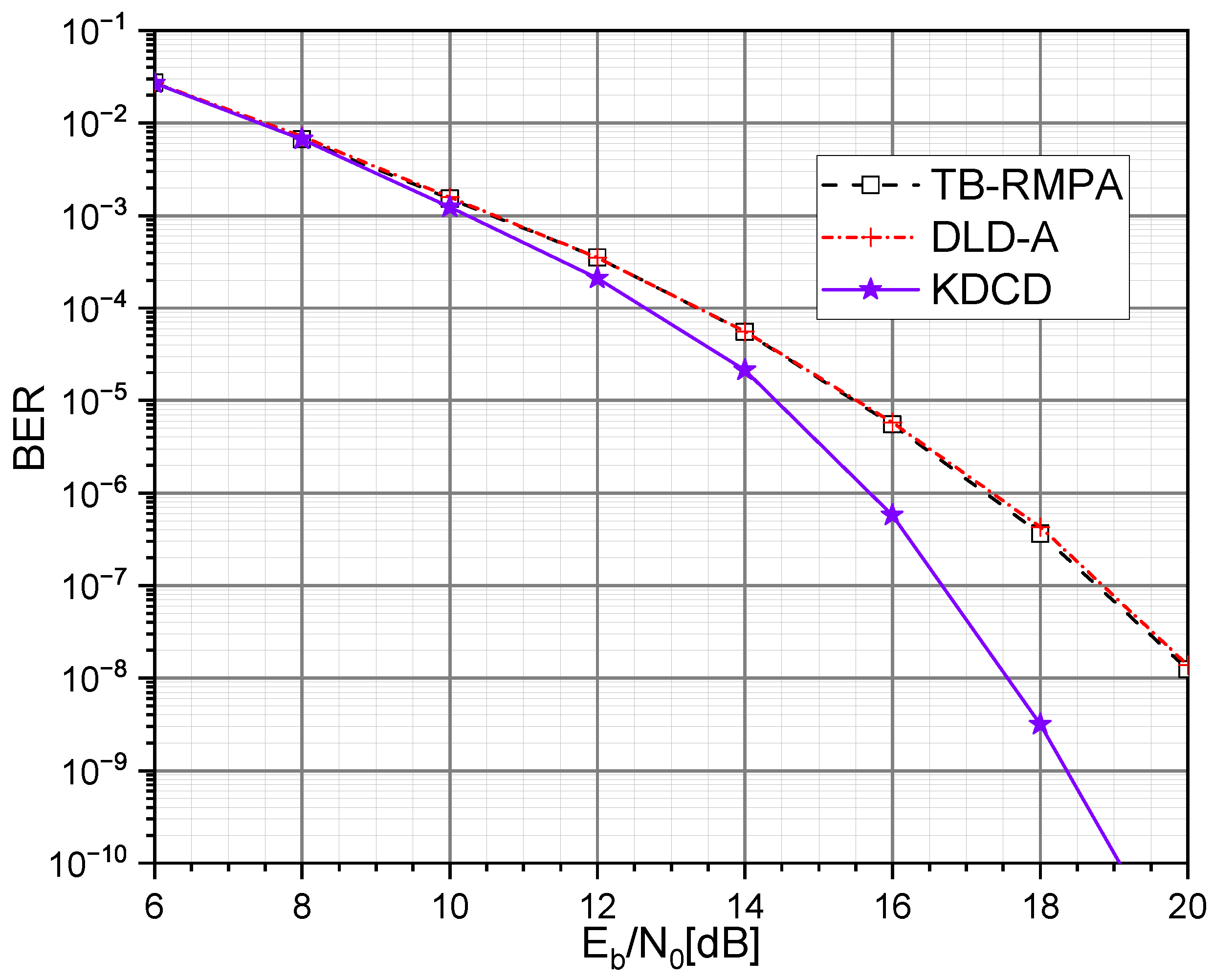
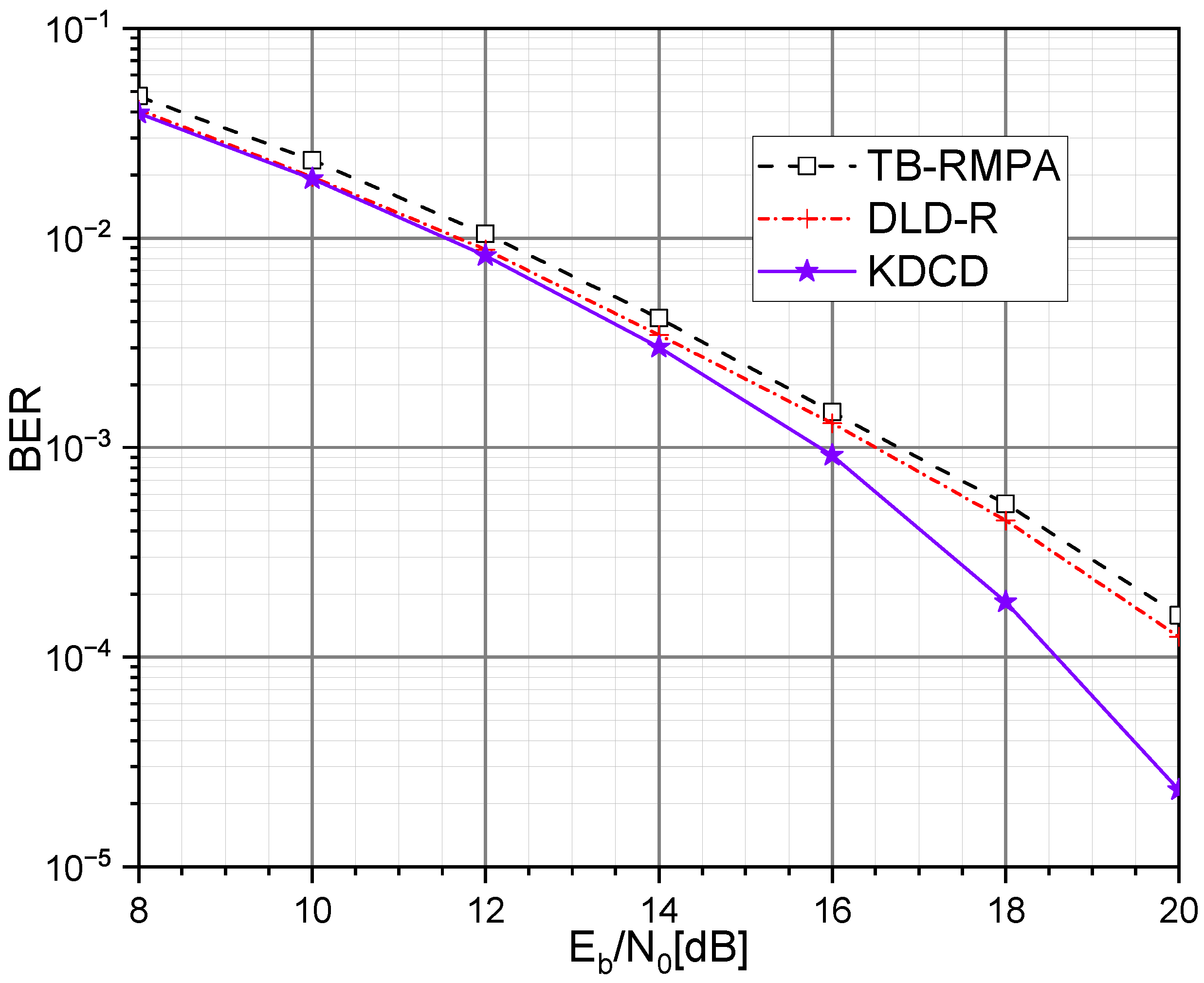
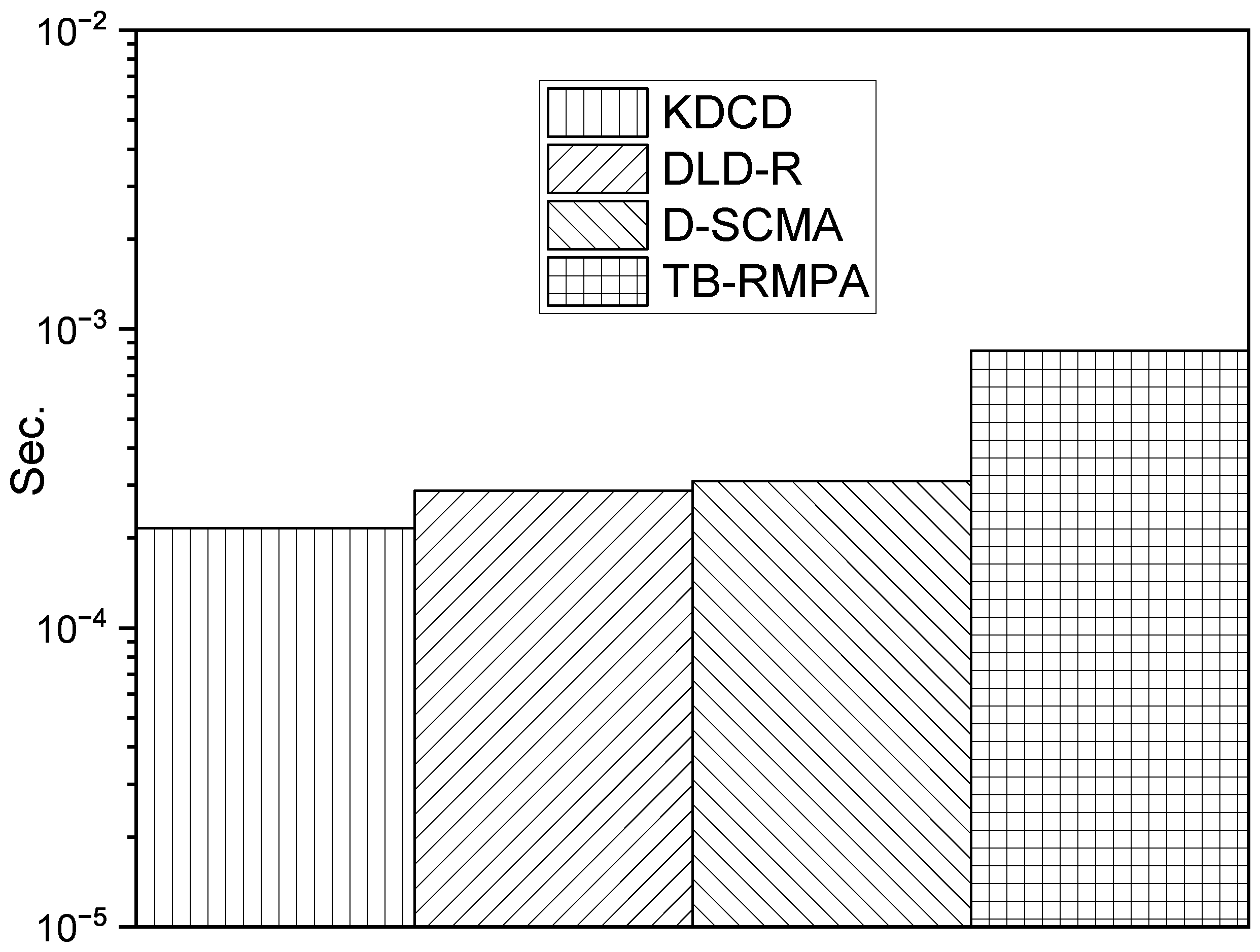
| Parameter | Definition |
|---|---|
| J | Number of independent users |
| K | Number of orthogonal resource elements |
| M | Size of codebook |
| Overloading factor | |
| Number of orthogonal resource elements occupied by a user | |
| Number of neighbors on an orthogonal resource element |
| Type/Stride | Filter Shape | Input Size |
|---|---|---|
| Conv/s2 | 3 × 3 × 1 × 8 | 56 × 56 × 1 |
| Conv1 dw/s1 | 3 × 3 × 8 dw | 28 × 28 × 8 |
| Conv1/s1 | 1 × 1 × 8 × 8 | 28 × 28 × 8 |
| Conv2 dw/s2 | 3 × 3 × 8 dw | 28 × 28 × 8 |
| Conv2/s1 | 1 × 1 × 8 × 16 | 14 × 14 × 8 |
| Conv3 dw/s1 | 3 × 3 × 16 dw | 14 × 14 × 16 |
| Conv3/s1 | 1 × 1 × 16 × 16 | 14 × 14 × 16 |
| Conv4 dw/s2 | 3 × 3 × 16 dw | 14 × 14 × 16 |
| Conv4/s1 | 1 × 1 × 16 × 56 | 7 × 7 × 16 |
| Avg Pool/s1 | Pool 7 × 7 | 7 × 7 × 56 |
| FC/s1 | 56 × 4096 | 1 × 1 × 56 |
| Softmax/s1 | Classifier | 1 × 1 × 4096 |
| KDCD | DLD-R | D-SCMA | |
|---|---|---|---|
| MAC | 561,008 | 747,008 | 794,694 |
Disclaimer/Publisher’s Note: The statements, opinions and data contained in all publications are solely those of the individual author(s) and contributor(s) and not of MDPI and/or the editor(s). MDPI and/or the editor(s) disclaim responsibility for any injury to people or property resulting from any ideas, methods, instructions or products referred to in the content. |
© 2023 by the authors. Licensee MDPI, Basel, Switzerland. This article is an open access article distributed under the terms and conditions of the Creative Commons Attribution (CC BY) license (https://creativecommons.org/licenses/by/4.0/).
Share and Cite
Chen, Z.; Ge, W.; Chen, J.; He, J.; He, H. A Novel Image-Classification-Based Decoding Strategy for Downlink Sparse Code Multiple Access Systems. Entropy 2023, 25, 1514. https://doi.org/10.3390/e25111514
Chen Z, Ge W, Chen J, He J, He H. A Novel Image-Classification-Based Decoding Strategy for Downlink Sparse Code Multiple Access Systems. Entropy. 2023; 25(11):1514. https://doi.org/10.3390/e25111514
Chicago/Turabian StyleChen, Zikang, Wenping Ge, Juan Chen, Jiguang He, and Hongliang He. 2023. "A Novel Image-Classification-Based Decoding Strategy for Downlink Sparse Code Multiple Access Systems" Entropy 25, no. 11: 1514. https://doi.org/10.3390/e25111514
APA StyleChen, Z., Ge, W., Chen, J., He, J., & He, H. (2023). A Novel Image-Classification-Based Decoding Strategy for Downlink Sparse Code Multiple Access Systems. Entropy, 25(11), 1514. https://doi.org/10.3390/e25111514







